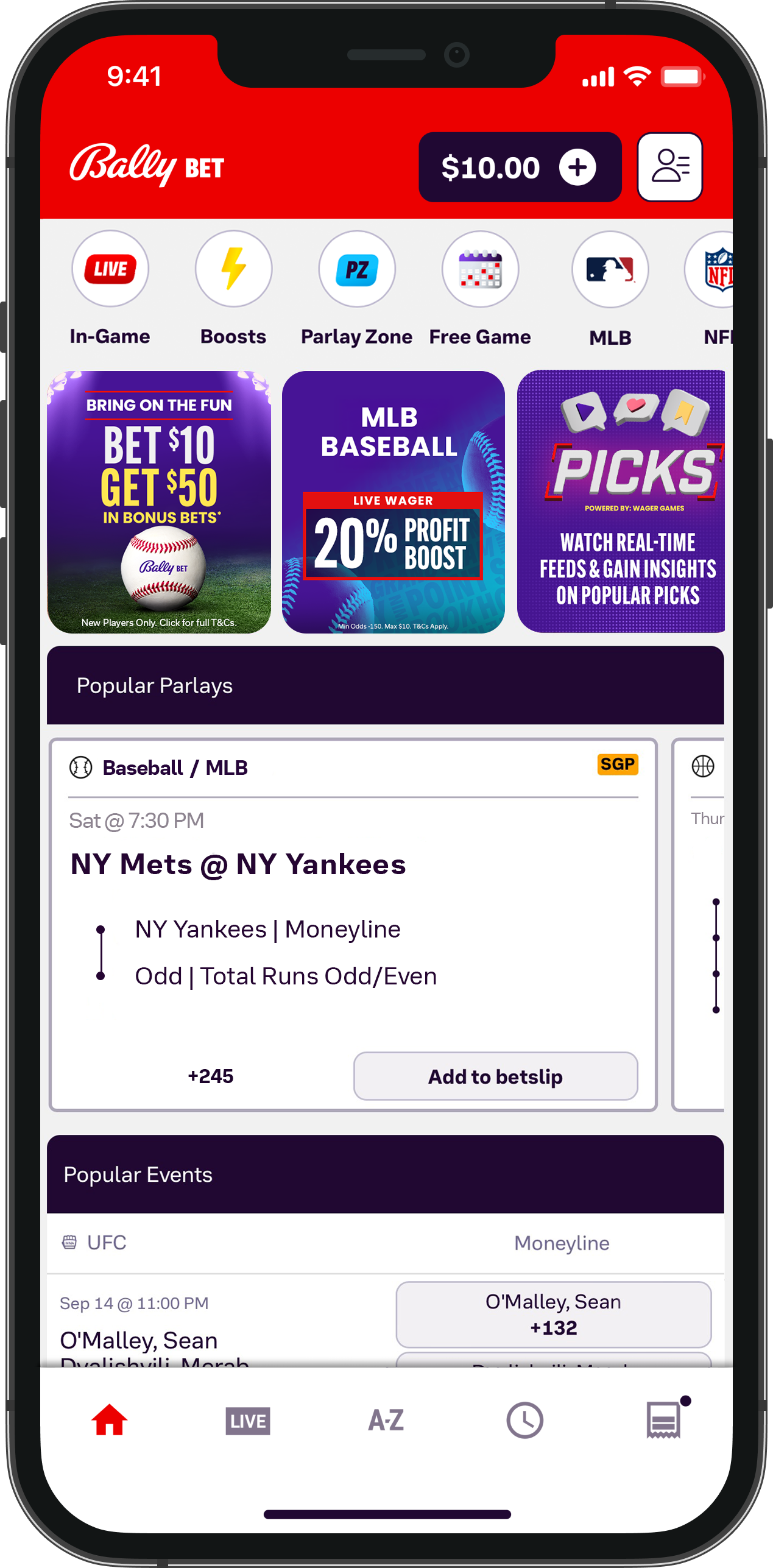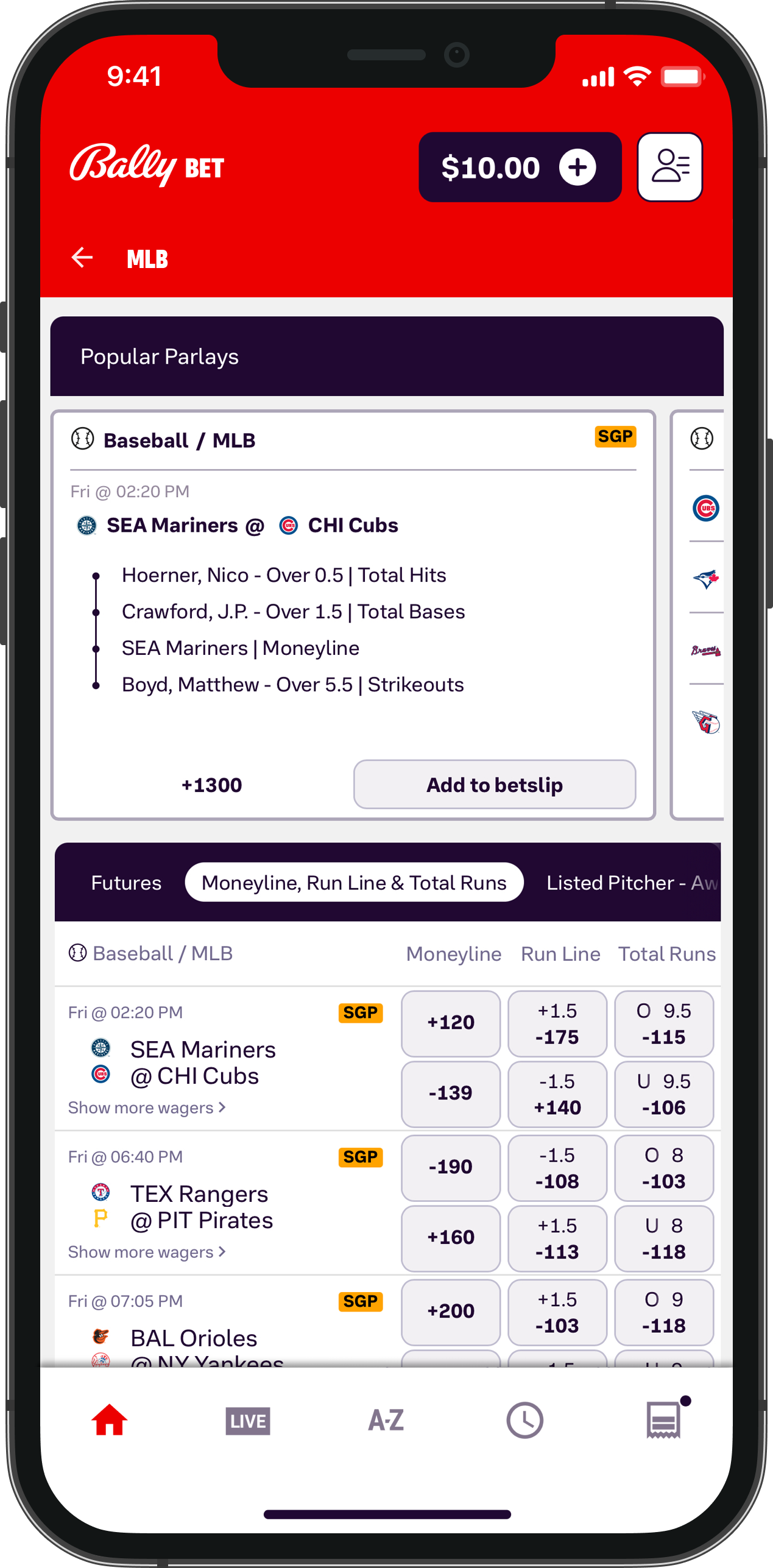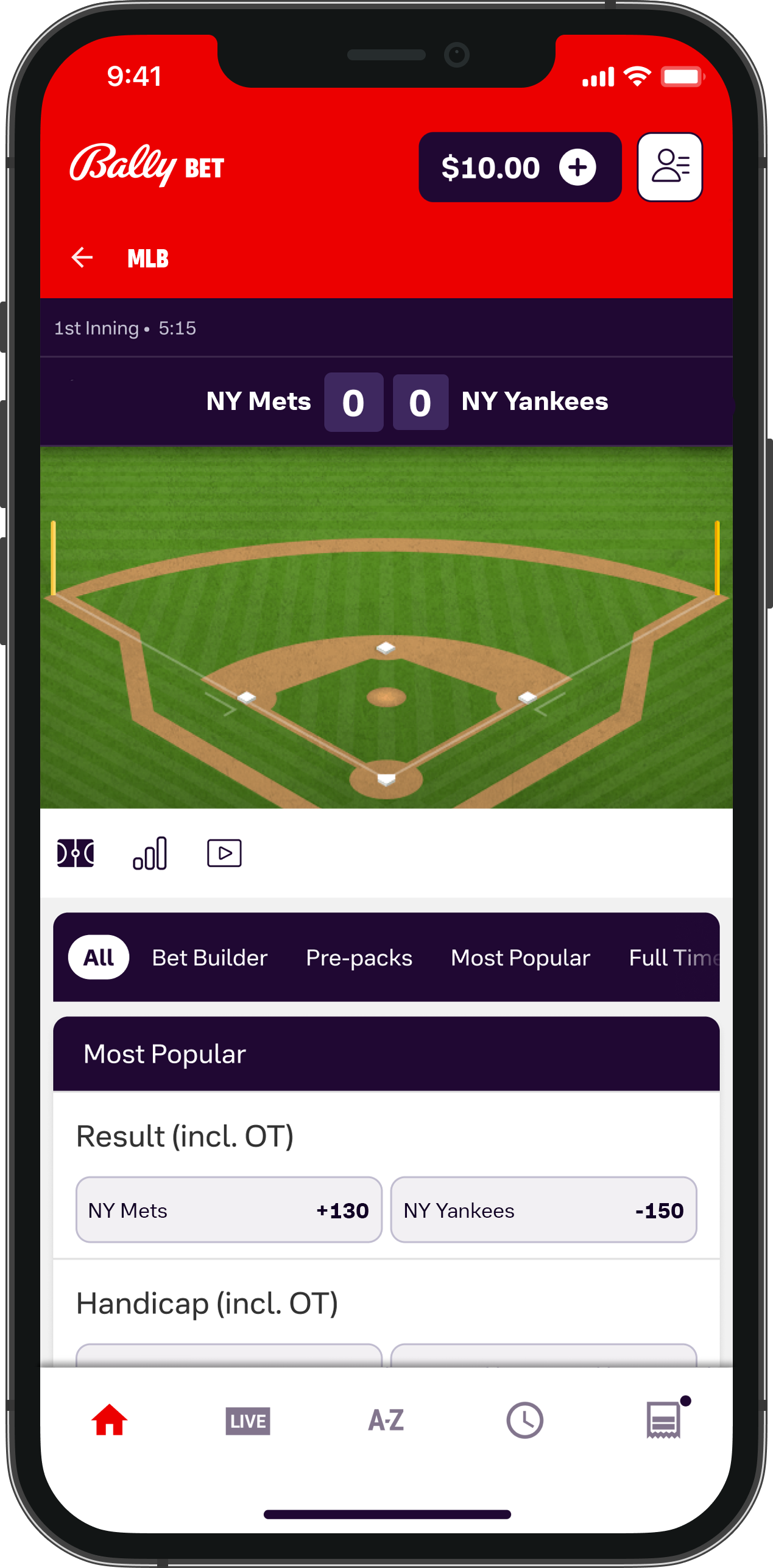Sports Betting Bankroll Management — A How-to Guide
There are two main ways to get better at sports betting: Make more winning selections, and learn how to manage your bankroll effectively.
The first of those isn’t exactly easy to action — sport is unpredictable, which is why we love it, but that also makes it difficult to place winning bets on a large scale.
The art of bankroll management, on the other hand, is a skill that anybody can learn. By the end of this article, you will know why bankroll management is so important, and have in your arsenal top tips on how to maximize your betting balance and make the most of winning streaks, minimize the damage caused by losing runs, and ensure your bankroll lasts as long as possible before your next deposit.
What Does Bankroll Mean?
One of the easiest demonstrations of how to read sports odds comes from the humble flick of a coin, because there are only two possible outcomes.
The standard coin has two sides – heads and tails – which, if you tossed the coin high in the air, each would have a 50% chance of landing that side up.
Therefore, if a betting market was created for the flick of a coin, we would expect the betting odds of landing a head to be even money, and the same would be true of tails – representing that true 50/50 market.
So what if the odds looked like this?
• Heads (-150)
• Tails (+150)
Instinctively, you would know that tails is the smart play here because the representative odds are much higher than they ought to be based on the probability of the two possible outcomes. Alternatively, you'd know that heads doesn't have a greater chance of being spun than tails - it may be that after 100 flips, heads has appeared 60 times or more. But that would be random variance, rather than anything probabilistic.
Of course, that's not to say that tails will win either but, in this context, you know that you've placed the correct bet by wagering on it. And in the long run, that's the best way to maximize your chance of being a successful bettor - securing 'value' odds in this fashion.
When it comes to betting on sports, the outcomes are more fluid and variable - nobody can truly predict with 100% confidence what will happen in a football game, for example. And so the key is to work out the relative probability of either team winning, or clearing their point spread, based upon the odds provided.
Imagine the San Francisco 49ers are playing the Denver Broncos. Their opening moneyline odds are:
• San Francisco (-300)
• Denver (+250)
Now let's imagine that news breaks that the 49ers' star quarterback and leading wide receiver have been struck down by injury in training. As a result, the moneyline odds shift to:
• San Francisco (-150)
• Denver (+110)
So have the lines moved enough, too much, or by just about the right amount? Being able to read betting odds, and convert them to percentages, will help you to make that decision before you can then place your wagers accordingly.
This is ultimately your guiding light when betting on sports. If you believe that the percentage chance of a pick winning is greater than the odds being offered by the sportsbook, you might take the bet – we’ll show you how to convert betting odds into percentages later in this article.
Top Tips for Managing Your Bankroll
As well as having a sort of granular staking plan, there are other bankroll management approaches you can take.
Track your bets
If you bet across multiple sports, or even on different lines and markets within a single sport, it’s vitally important that you track your bets in a spreadsheet or even on a scrap of paper.
You might be amazed by what you learn. Perhaps you specialize in a particular sport or bet type, and maybe your success rate in others leaves a lot to be desired.
Bankroll management becomes a lot easier with bet tracking. You can maximize your stakes for wager types where you clearly hold some expertise, while minimizing the amount of bankroll you give up to your less successful bets, or perhaps eradicating them from your game altogether.
Work out return on investment
While tracking your bets gives an overall idea of how you’re performing, return on investment (ROI) calculations provide a more accurate drilldown.
ROI lets you measure the actual profitability of a bet type, and not simply whether it won or not. You could have nine losing bets at +100 and then one winner at +1000, so while your win-loss ratio looks poor, you’re actually turning a profit nonetheless.
You can calculate return on investment on your bets with the following calculation:
• (profit/amount wagered) x 100
So, a $10 bet at odds of +150 that wins would yield an ROI of 150%, based on (15/10) x 100. Over the long term, this figure will drastically fall; that’s just the nature of the beast, but 0.1% over the course of a year is still a healthy ROI when you consider the fun that sports betting brings. Ideally, you could get that up to somewhere in the 5% range.
Be robotic
Never chase your losses. That’s the golden rule of sports betting.
From time to time, it’s likely that you will suffer a bad beat in betting. It could be the buzzer-beating three-pointer or the last-minute goal that downs your wager, but the key is to treat wins and losses with equal detachment.
Because if you become emotional after a hard loss, or tilt - to borrow a popular phrase in poker - there’s a chance that all the good work you’ve done managing your bankroll could be undone in one afternoon, as you place poorly researched bets or go odds hunting (backing long shots in a bid to win back your earlier losses).One of the key bankroll management tips is to research and place your bets for a specific game week in advance — sticking to that itinerary and never deviating from it. If you win, great. If you lose, at least you’re not going to exacerbate the loss by betting badly on picks that you haven’t vetted and verified already.
Some bets lose because they weren’t great picks. Others lose due to variance or just bad luck. The details are irrelevant. Ultimately, a loss is a loss.
On the flip side, there’s a possibility that you could become overconfident after a good day of betting. Maybe you decide to scale up your staking, throwing your original bankroll management plan to the wind. Again, this should be avoided. You shouldn’t be scaling up until you have a large sample of bets to look back on and analyze.
How to Bet in Units
Although betting flat stakes of around 2% of your overall bankroll is a solid strategy for newcomers to sports wagering, there’s a slight issue with the system: It doesn’t cater for different odds levels, nor the varying confidence levels you may have prior to placing the bet.
For example, you probably wouldn’t want to wager the same amount on a -100 bet as you would a +10000 chance. Why? Because, evidently, a -100 bet has a far greater chance of being successful than the +10000 bet. Read our guide on implied probability for more information on that.
So, perhaps a smarter bankroll management strategy would be a staking plan that takes odds size and confidence level into consideration. And there is one: unit-based betting.
Let’s say that your bankroll is $100, and you decide that one unit is $1. You can use this as a foundation for determining your stake size.
Golf is a good sport to use as an example here. Imagine it’s Masters week, and you’ve identified three players that you want to wager on:
• Player A (+500)
• Player B (+5000)
•Player C (+15000)
With a flat staking system, you’d be putting 2% of your bankroll on these three individuals. And yet you know that Player A has a greater likelihood of winning the tournament than Player B, and a much greater likelihood than Player C.
That’s the beauty of unit betting. You can still risk the same amount but spread it proportionately based on the players’ implied probability of lifting the trophy. If one unit is $1, you could bet accordingly:
• Player A – 1.5 units ($1.50)
• Player B – 1 unit ($1)
• Player C – 0.5 unit ($0.50)
Notice that your outlay would still be $3, which is the same as if you’d flat-staked $1 on all three players. But now, you’re securing a higher return should Player A – who is, notionally, the most likely of the trio to win – go on to prevail.
You can bet multiple units or fractions of a unit based on the odds and your confidence in the selection, and when wagering on multiple outcomes, you can set a total bet amount and then split up your unit stakes as you see fit.
The idea is to protect your bankroll at all costs by only making sensible bets at a stake that is a small portion of your entire balance. That way, winning streaks take care of themselves, while losing runs are not all that destructive to your bankroll.
As a general rule, a stake of 2% of your bankroll per bet is advised. If you opt to use a unit-based system, one unit could be 1%, with bet ranges from a half-unit right up to five units, depending on how confident you feel.
Calculating the ROI on a bet is easy enough, just use the formula (profit/amount wagered) x 100. You can calculate your annual betting ROI using this equation, too.



